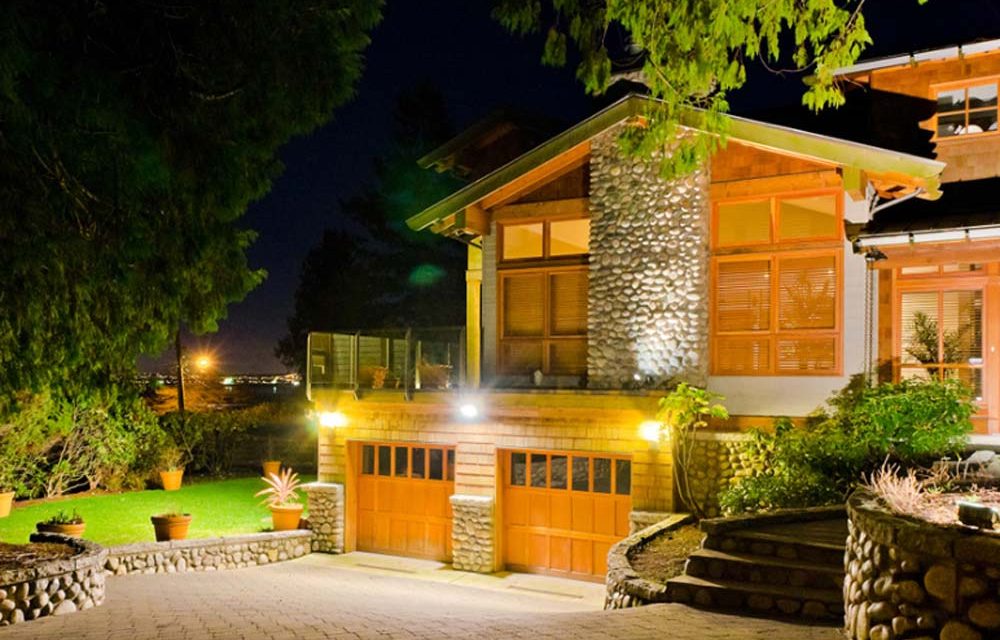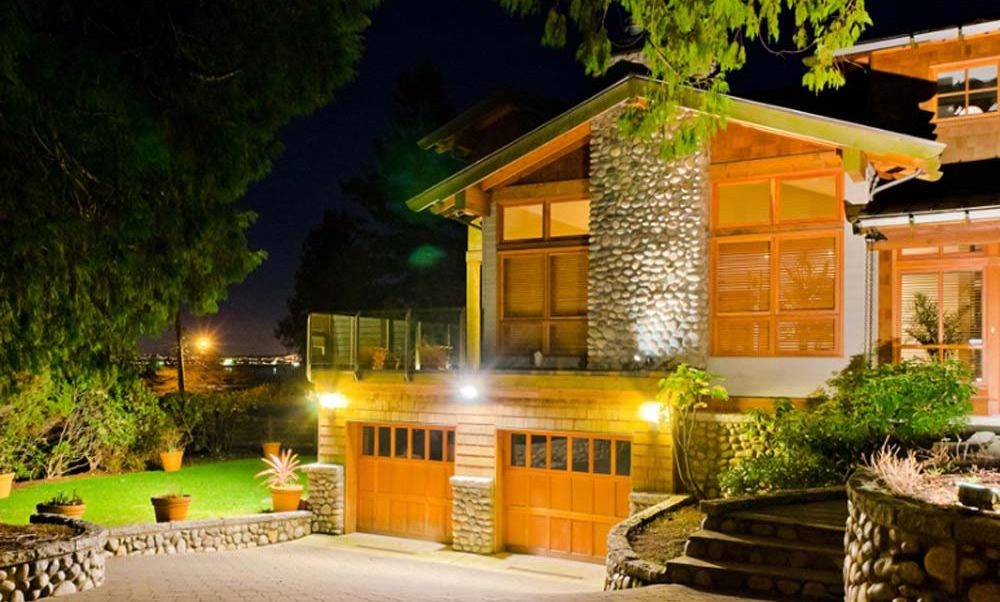
Initial post title presented by a faded blogger. Lol? Apologies. Took a break from blogging, but I’ve got what I believe is a solid tutorial for you! Who can resist some outdoor lighting, right?
After procrastinating for years, we finally installed some outdoor lighting on our deck, and it. is. amazing. Not only that, but it’s super simple and quite affordable to accomplish! That’s why I’m here. To share my outdoor lighting tips with you.
Materials Required:
- A deck. This could be a patio. Or a porch? A platform with one wall?
- String lights. I suggest something more durable for better longevity.
- Fence posts (ours are 12 feet, trimmed down to 9 feet) I couldn’t locate the exact one online, but I linked a shorter version of what we bought.
- Small carabiners for each attachment point on the house
- Eye hooks to drill into the wall
- S hooks for each post
- Cordless Drill
- Hacksaw (if shortening your fence posts)
- Zip ties (similar style) that match your posts
Alright, first things first. You’ll want to plan out where your lights will go. Zigzag, square around your area? It’s your choice! I’m sharing some not-so-great photos of the actual supplies I used.
There are clearly various methods of hanging the lights on the post, but we chose to drill a small hole and insert the S Hook into it. It seems to be stable (just remember, there’s a lot of tension once they’re up), so I believe it’s effective!
After we drilled the holes into the poles and placed the S Hooks, we attached them to our deck railing. Since our railings are metal, we couldn’t drill into them. Once again—winging it here—we decided to zip tie them to the railings. We utilized 18-inch industrial ties.
Once we trimmed off the ends, you hardly notice them on the railing. It’s worth it even if they’re visible! 🙂
Thennnnn use the eye hooks to drill into your house (sounds more daunting than it is!).
Connect the carabiner to the eye hook and then thread the light cord through the carabiner.
I recommend positioning the hook fairly high up. I’d estimate around 9 1/2 feet. You want to leave some space for the string lights to “swoop,” and you wouldn’t want anyone bumping their heads.
Honestly, the trickiest part of this entire project is figuring out how to arrange the lights. I only had to shift one hook after drilling it into the wall, and I wasn’t too bothered. People shouldn’t be examining your house walls anyway!
Here you see the transition from late afternoon to evening, to nighttime.
Va-Va-VOOM!
I haven’t created a tutorial in about 712 days, so my apologies if I missed something! Feel free to check out the video version of this on Instagram. I have saved it in my stories. Best of luck!
<!–
–>
**Guidelines for Installing Outdoor Lighting: A Detailed Overview**
Outdoor lighting can enhance your garden, patio, or driveway, improving both visual appeal and safety. Whether your goal is to light up pathways, showcase landscaping elements, or provide a warm glow to your entrance, setting up outdoor lighting can be a fulfilling DIY project. Here’s a detailed guide to assist you in effectively installing outdoor lighting.
### Step 1: Design Your Lighting Plan
1. **Evaluate Your Requirements**: Identify the purpose of your outdoor lighting. Are you emphasizing security, ambiance, or utility?
2. **Draft a Layout**: Make a rough sketch of your outdoor space, marking spots where you plan to place lights. Think about pathways, driveways, garden features, and entrances.
3. **Select Appropriate Fixtures**: Choose fixtures that match your design and intent. Options include path lights, spotlights, wall lights, and floodlights.
### Step 2: Collect Essential Tools and Materials
– Outdoor light fixtures
– Low-voltage electrical cable
– Transformer (for low-voltage setups)
– Cable connectors
– Drill and drill bits
– Screwdriver
– Wire strippers
– Shovel or trenching tool
– Voltage tester
### Step 3: Set Up the Transformer
1. **Choose a Location**: Place the transformer near an outdoor power outlet. It should be affixed to a wall or post, ideally in a sheltered space.
2. **Mount the Transformer**: Use screws to secure it in position. Ensure it’s located at least 12 inches above the ground.
3. **Connect to Power**: Plug the transformer into the outdoor outlet. Utilize a weatherproof cover for the outlet to safeguard it against the elements.
### Step 4: Run the Cable
1. **Outline the Cable Path**: Lay out the cable along the route where lights will be placed. Ensure the cable is sufficiently long to connect all fixtures.
2. **Dig Trenches**: Employ a shovel or trenching tool to create shallow trenches (approximately 3-6 inches deep) for the cable. This serves to protect the cable from damage.
3. **Place the Cable**: Insert the cable into the trenches, leaving adequate length at each fixture site for connections.
### Step 5: Install the Light Fixtures
1. **Position the Fixtures**: Set each fixture in its designated position. Ensure they’re stable and level.
2. **Connect the Fixtures**: Utilize wire strippers to remove insulation from the cable ends. Attach the fixture wires to the cable using cable connectors.
3. **Secure the Fixtures**: Use screws or stakes to fasten the fixtures in position. Confirm they are firmly held to withstand weather conditions.
### Step 6: Test the Setup
1. **Power On**: Activate the transformer to power the system.
2. **Verify Each Fixture**: Use a voltage tester to check that each fixture receives power. Adjust connections as necessary.
3. **Adjust Lighting**: Once all fixtures are operational, tweak the angles and directions of the lights to achieve your preferred effect.
### Step 7: Complete the Installation
1. **Conceal the Cable**: When satisfied with the lighting, cover the cable in the trenches with soil or mulch.
2. **Secure Excess Length**: Tuck away any surplus cable and secure all connections to prevent moisture exposure.
3. **Set the Timer**: If your transformer has a timer, configure it to turn the lights on and off at your selected times.
### Maintenance Guidelines
– **Routine Cleaning**: Clean fixtures frequently to eliminate dirt and debris that could impact light output.
– **Inspect Connections**: Regularly check connections and cables for any signs of wear.
– **Change Bulbs**: Promptly replace any burnt-out bulbs to maintain consistent lighting.
By adhering to these steps, you can successfully install outdoor lighting that enhances the charm and safety of your outdoor areas. Enjoy the transformation and the added functionality that well-planned lighting provides to your home.




